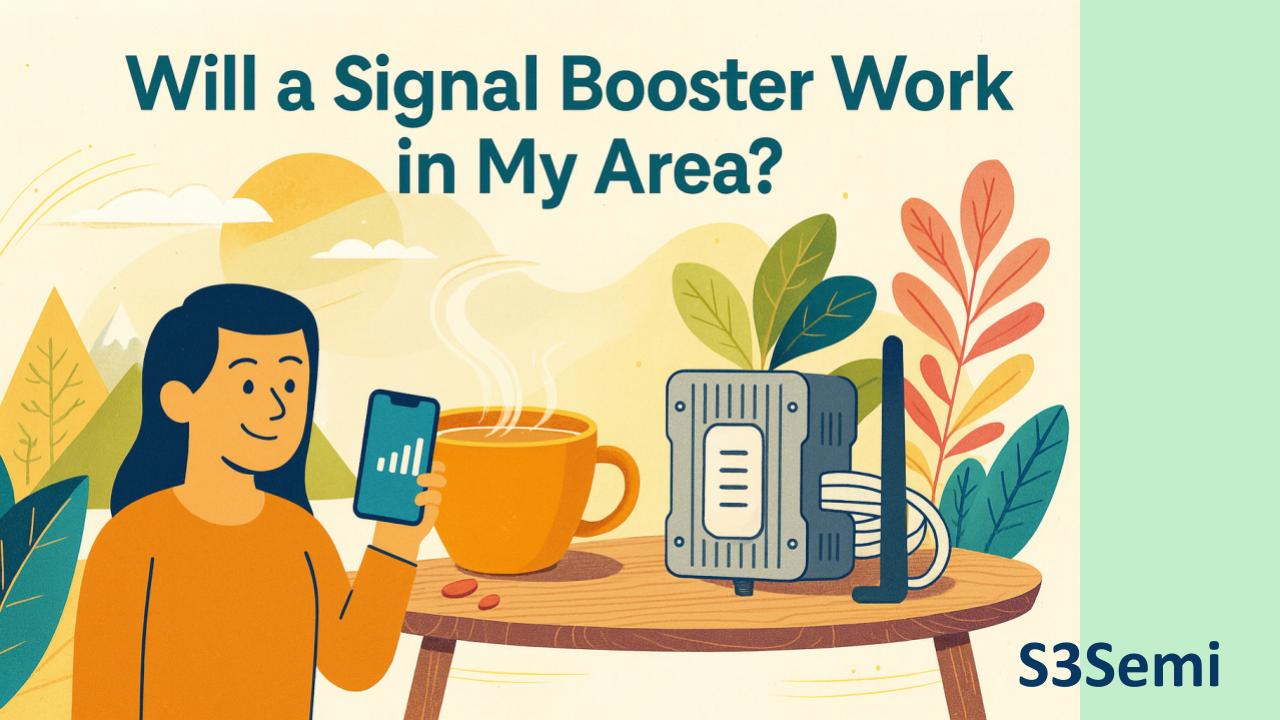📶 If you’re experiencing dropped calls or slow mobile data, a cell phone signal booster might seem like the perfect solution. But before you invest, it’s important to understand where these boosters work best — and the environmental factors that affect their performance.
In this guide, we’ll explore how signal boosters behave in different settings and help you determine whether one will work in your area.
🌄 Signal Strength in Rural Areas
Signal boosters are especially helpful in rural or remote areas where cell towers are sparse.
How They Help:
- They amplify weak outdoor signals, even those as low as -110 dBm.
- Boosters take that faint signal, amplify it inside your home or vehicle, and rebroadcast it for your phone to use.
Limitations:
- No signal = no boost. A booster can’t create a signal where none exists.
- If you’re in a deep valley or far from any cell tower, even a booster may struggle unless combined with a high-gain directional antenna.
✅ Tip: Stand outside and test your signal using field test mode on your phone. If you have at least 1 bar (or -110 dBm), a booster can likely help.
🏙️ Urban Challenges
You might assume boosters aren’t needed in cities — but that’s not always true.
Common Urban Signal Issues:
- High-rise buildings can block or reflect signal.
- Dense construction materials (concrete, metal) often degrade signal indoors.
- Network congestion during peak hours can weaken your reception.
Signal boosters in urban areas can:
- Improve reception in apartments and condos
- Help basement offices or inner rooms with poor indoor coverage
- Bypass local interference from surrounding networks
✅ Tip: Window-mounted outdoor antennas often work best in cities — they avoid roof access hassles and reduce line-of-sight obstructions.
🏔️ Geographical Factors That Affect Signal
Several physical and environmental elements influence whether a signal booster will perform well in your area:
1. Elevation
- Being lower than surrounding terrain can block signals.
- Boosters placed on rooftops or poles help overcome elevation issues.
2. Obstacles
- Thick trees, hills, or buildings between you and the tower can weaken signal.
- Directional antennas (like Yagi antennas) can help focus on distant towers through obstructions.
3. Carrier Infrastructure
- Some rural areas may be served only by one or two carriers.
- Your booster needs to support the frequency bands your carrier uses in your region.
✅ Tip: Use online tools like CellMapper or OpenSignal to check tower locations and signal quality in your area.
🧭 Conclusion
Will a signal booster work in your area? That depends on a few key things:
| Factor | How It Affects Performance |
|---|---|
| Existing Signal | At least 1 bar needed outside |
| Terrain | Hills and valleys can block signals |
| Obstacles | Dense trees, metal, and concrete limit effectiveness |
| Tower Distance | Farther towers = weaker signal to boost |
| Urban Density | More interference, but also more infrastructure |
| Antenna Setup | Correct antenna placement makes a big difference |
In short: If you have any signal outside, a signal booster can help bring it indoors or strengthen it in your vehicle. By understanding your local terrain, building materials, and carrier network, you’ll be well-equipped to decide whether a booster is the right solution for your location.
